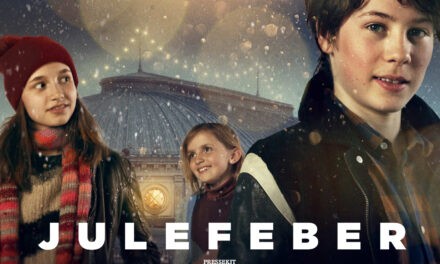During June and July a good many of my evenings -and some whole days- were spent at the at the National Film Theatre following the Dennis Potter season. Marcus Prince, the BFI’s knowledgeable television programmer, was collaborating with Potter’s long standing friend and producer, Kenith Trodd, to screen every single one of Potter’s television works. It made for an intense couple of months. Ken Trodd, who introduced many of the screenings and himself sat through most of them, said that even he began to see new layers of meaning and links between the plays. And that was only half of it: the retrospective will be completed next June and July.
I’m no Potter expert, and I’m aware of the millions of words which have explored the rich territory of his dramas and series, as well as his revealing, and often painful, televised interviews – so in many ways I hesitate to add my thoughts … However I found myself reflecting on a particular recurring theme – partly because it throws light on a disturbing current debate, and partly because I have myself looked at it in the past: the theme of child abuse.
Since the first revelations about Jimmy Savile in 2012, the sexual abuse of children has been an explosive topic, difficult to report, and even leading indirectly to the resignation of a BBC Director General. With the jailing of Rolf Harris, the charges against a string of well-known entertainers and reports of historic abuse linked to Westminster itself, it has remained a headline topic. Reporting tends to be expressed in terms of horror at the revelations, together with shock that they were covered up, ignored or simply discounted for so long. It’s a question of naming and shaming, blame and outrage, with little exploration of the complex of circumstances, attitudes and understandings which mean that abuse has been – and no doubt still is – commonplace. Dennis Potter’s approach was very different.
I first looked at the reporting of child abuse when I was writing my book, What is a Child, reviewing press representations of children and childhood. Viewing the Potter films led me to look back at what I had written then. This was the late 1980s, the time of The Singing Detective (1986) and the showing of the initially banned Brimstone and Treacle (1987). Jimmy Savile and Rolf Harris were part of the television landscape, frequently seen surrounded by groups of delighted children. But it was also the time of several major scandals around sexual abuse. In the town of Cleveland, a number of children were removed from their parents because of accusations against family members. I traced the development of the story in the popular press, where it appeared that families were vindicated and social workers became the villains. Accusations against ‘the family’ did not fit an acceptable public narrative, and attention was re-directed to the ‘danger from a stranger’. In the Scottish island of Orkney ‘satanic abuse’ was alleged.
Of course, while reporting the scandals, newspapers also featured young girls in provocative poses (‘what a difference a week makes’ was the headline for a pair of photographs in which a 16-year-old posed first in her school uniform then as a glamour model Daily Mirror 22.2.1983). The blindness to the contradictions, the lack of nuance, the blanket refusal to understand was striking, and is echoed by much of the reporting today.
So back to Dennis Potter (with apologies to Potter experts amongst you). Potter was sexually abused at the age of ten. This was mentioned in a documentary screened in the NFT season. He was abused by an uncle with whom he shared a room. He did not tell his parents and felt unable to talk about it for many years. In an interview he described the experience as ‘foul and terrible’ as ‘being caught by an appetite and abused out of innocence’.
The description brings to mind the image of Roy Hudd, who plays an obsessive stalker -not of a child but of a young woman- in Lipstick on Your Collar (1993). As he sits in his car outside her house, sweating, waiting, panting a bit, daring himself to approach her, he embodies an appetite which can unthinkingly ‘abuse out of innocence’. He is a repulsive character -yet there is a curious empathy, a refusal to condemn, an almost tragic recognition of his weakness in the face of his obsession. The plays contain a complex – and extended – reflection not only of the experience of the victim, but repeated attempts to understand, and to deal with, that abusive appetite.
Many of Potter’s plays are autobiographical, and many are rooted in childhood trauma. Where the Buffalo Roam (1966) is about a young man unhinged by physical abuse. Severly beaten as a child, he acts out his rage against the world with a destructive violence, a violence which, in Visitors, 20 years later (1987), is fantasised by a teenager, disgusted by the behaviour of his step-parents and their friends. ‘Dirt and pollution’ he mutters in the opening words of the play.
Watching the plays I felt I was watching an extended working through of the theme of abuse. In many ways, Potter’s compliant, child-like women (child-like despite their overt sexuality -or perhaps their unembarrassed sexuality is part of their childishness) stand in for abused children. They confront Potter’s tortured male heroes – who mostly behave appallingly (think of Arthur (Bob Hoskins) in Pennies from Heaven) – but, at the same time are able to draw us into their conflicted worlds.
In Dreamchild (1985) his second script (this one filmed for cinema) about the relationship between the Oxford don Charles Dodgson/Lewis Carroll and Alice Liddell, the Alice of Alice in Wonderland, Ian Holm, as Dodgson joins the ranks of Potter’s tortured male heroes. The events of the 1850s, when Dodgson befriended the Liddle family, are told in flashback as the aged Alice, now Mrs Hargreaves, is greeted with adulation on a visit to the United States in 1930. The film makes it clear that Dodgson, did not in fact act out his all too obvious, and clearly embarrassing, desire as he poses Alice for the famous photographs (not actually used in the film). Yet the flashbacks of old age, which come to her as she revels in her reception in the US, bring back memories not of abuse but of affection. The distasteful, unkempt and rather disgusting creatures, whom the fantasy Alice meets in the Wonderland scenes – a slimy caterpillar, a March Hare with his fur matted and patchy, a sneering Mad Hatter – the creatures of Dodgson’s imagination, stand in for abusive old men. Much has been made of the ‘recovered memories’ of abuse. Freud thought they masked a forbidden desire. And in this case the recovered memory was one of a forgotten warmth. In the final scene, the young Alice – who’d been subject to stares and a barely concealed ‘appetite’ – embraces Dodgson at a family picnic. He does not return her hug. His limply hanging arms are eloquent. It is one of many equivocal endings.
The ending of the notorious Brimstone and Treacle is equally ambiguous in its recovered memory. A young man representing the devil (he reveals his clawed feet and can call down lightning at will) rapes a catatonic girl. In the NFT programme notes (and in many accounts of the play), this is described as ‘bringing salvation’. As a consequence she regains her senses – and her memory. But this ‘redemption’ through rape reveals an earlier crime which, it emerges, was the cause of the ensuing trauma.
And this is my point: in its treatment of abuse, like all the plays, Brimstone and Treacle is complex, ambiguous, with no clear delineation between the evil and the innocent. ‘We cannot even begin to define good and evil without being aware of the interactions between the two’ wrote Potter (quoted by Mark Lawson, reviewing Brimstone and Treacle in The Guardian 10 August 1987). And a quotation from Kirkegaard begins the play ‘There resides infinitely more good in the demonic than in the trivial man.’ With her memory restored Patsy recalls the shock which led her to run into the road where she was knocked down by a car. She had found her father in bed with her best friend. Her enforced silence reflects many silences, as both father and devil deal with their appetites.
It was an early play, Moonlight on the Highway (1969), which took head-on the reality of abuse. Its reclusive, nerdish hero, played by a young Ian Holm, was abused as a child. Unusually, this play considers how abuse is dealt with by its victim … in this case through an obsession. David is an expert on the career of wartime crooner Al Bowly – although this the late 1960s when rock music was taking off. His need to recover the past, and to speak his experience, is acted out in front of a group of elderly Bowly followers – a completely inappropriate audience. He declares that he has an admission to make. But the expected admission is not about the abuse – this is deflected on to a ‘worse’ crime: he has slept with 1000 prostitutes (Dennis Potter himself made a similar claim). In Moonlight the unfashionable music, its sentimental tunes and insightful words (as in Pennies from Heaven) is used to cope with a trauma which can never be forgotten.
As a final note, In the 1980s, when Brimstone and Treacle was finally shown, television was playing an innovative role in drawing attention to the issue of child abuse. There were social action programmes like Thames Television’s Help, but more spectacularly Esther Rantzen, a major television personality at the time launched a spin-off from her top rating That’s Life. Childwatch (1986) set up the charity Childline – a free and confidential telephone line for children (it’s now part of the NSPCC). For once the dominant image was of a child taking action to resolve the situation, rather than being portrayed as dejected, crushed and despairing.
Summer 2014
Pat Holland is a part-time lecturer at Bournemouth University. Her most recent book is Broadcasting and the NHS in the Thatcherite 1980s: The Challenge to Public Service with Sherryl Wilson and Hugh Chignell Palgrave Macmillan 3013.





